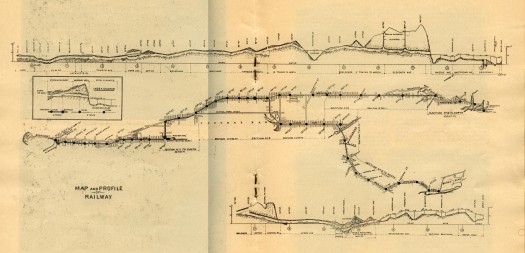I’ve been reading the blog Market Urbanism quite a lot recently. Writing recently about “the problem with “public” transportation” (and after noting the frequent use of ‘public transit’ where the broader ‘mass transit’ would be more appropriate), they argue:
…although the [New York] Subway was heavily subsidized by the government, the truth is that it was a very expensive and ineffective replacement for elevated trains, which are just as fast as subways, and far cheaper to build. The els were quite profitable and transit companies were eager to build them, but the NIMBY interests didn’t like the noise they made and the city resented the limited role that it had in the lines. In fact, it was the city holding out for a subway and the massive spending binge it took to finally build it that contributed to mass transit’s insolvency – a trend which continues unabated today. If the city hadn’t insisted on the unsustainable luxury of forcing all rapid transit underground (a theme I hope to explore more deeply in the future), then Second Avenue, and a whole bunch of other streets, would have gotten rapid transit a century ago. (And I won’t even get into the fact that much of the NYC “Subway” is actually repurposed old private elevated lines.)
There is a lot to agree with in that graf, but the conclusion of the post, which is literally “public transportation sucks”, lacks nuance (hah) — as does the implied conclusion that private development will always lead to a better solution than public. For example, it would be interesting to see property values plotted along aboveground and underground train lines in NYC and Chicago. It’s easy to call underground mass transit an unsustainable luxury, but would that assessment be altered by an offset resulting from increased property tax income derived from higher property values along underground lines? More generally, I’m not convinced that the formulation ‘cheaper and easier equals more attractive to private companies equals better solution’ is universally true, though this will probably be the case in many scenarios, due to the high opportunity cost of not building additional lines paid when cities choose to focus limited funds on less noxious but more expensive underground lines. In an excellent later post, Market Urbanism makes a case that the opportunity cost of not embracing private elevated lines was actually tremendous for America:
Though everyone loved the subway (well, sort of), burying rapid transit is much more expensive than building it above streets and alleyways, so few cities ever mustered up the funds to build subways. (This cannot be emphasized enough: Elevated lines were(/are?) cheap and profitable enough to be built by relatively apolitical private enterprise, whereas subways were not.) From this lack of els came horrible street crowding and congestion as people piled into overburdened at-grade streetcar lines. From this congestion came height limits, and from these height limits came sprawl, and from sprawl came the automobile and parking lots, and by the Great Depression, development pretty much ended.
The complicated nature of this set of cost/benefit trade-offs between public and private infrastructures is why we’ve argued in the past that, when discussing the creation and operation of infrastructure, using ‘development for constituents’ vs ‘development for markets’ is a better way to frame this debate. This framing provides a window into some of the key results of the two methodologies, such as (respectively) geographically comprehensive coverage vs redundancy at high-impact nodes, or pricing to increase use vs pricing to increase profitability and financial sustainability. Infrastructural development is always in response to some sort of demand, and the type of demand (or mix of demands) has a significant impact on the nature of that development.
I would love to study the differing characteristics of constituent-driven and market-driven infrastructural development, as I suspect that the resulting infrastructures lead to dramatically different generative effects on the development of urban systems. How do patterns of infrastructural development differ depending on the type of demand which instigated their creation – and how do these effects remain embedded in the city as it develops among its infrastructures?
[For more beautiful early maps of NYC transit, like the combination plan / section drawing of the Interborough Rapid Transit lane from 1904 above, visit this incredible online archive: http://www.nycsubway.org/maps/historical.html]



[…] This post was mentioned on Twitter by cleancartalk, polis. polis said: Transportation markets, constituencies, and infrastructure http://m.ammoth.us/blog/2011/02/public-vs-private-mass-transit/ […]
Very nice…
This line ‘development for constituents’ vs ‘development for markets’ is a better way to frame this debate. as you have articulated before seems key. Especially when placed within context of this and after noting the frequent use of ‘public transit’ where the broader ‘mass transit’ would be more appropriate.
The inclusion of word ‘public’ is key, because it grounds the discussion, it is then not just about flows but about people. It references the soft/social side of infrastructural/transit concerns. It also, gets to some of the issues with regards to externalities and ‘the commons’ that a use of just transit doesn’t. Things, like quality of life (perhaps represented by property values) that you touch on in your discussion of the differences between, underground vs above ground forms.
[…] vs ‘development for markets” used by Stephen Becker in a recent post entitled markets, constituencies, and infrastructure is so useful. It helps to focus designers on the fact that cities should be made for people. The […]